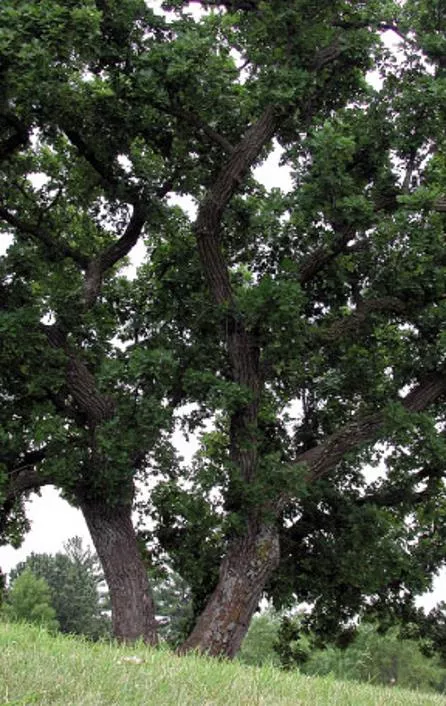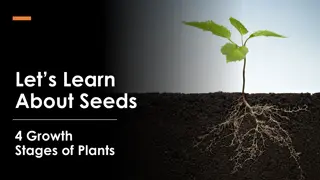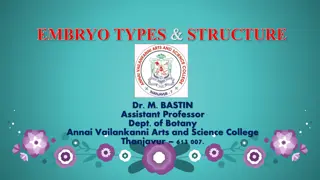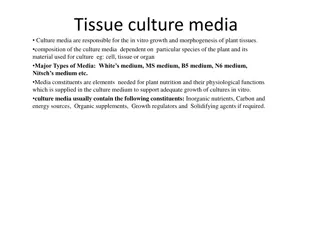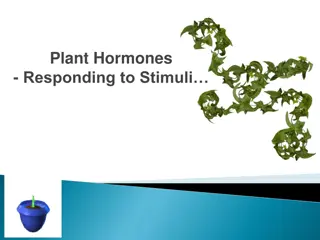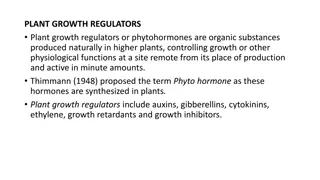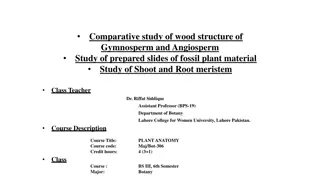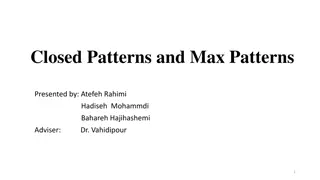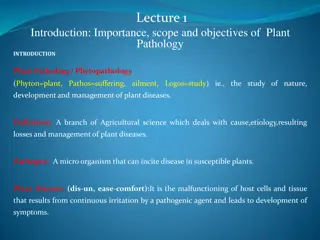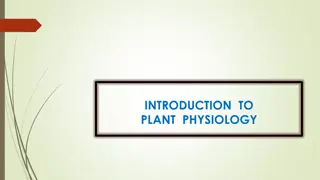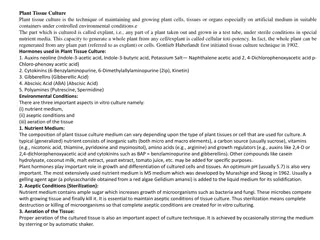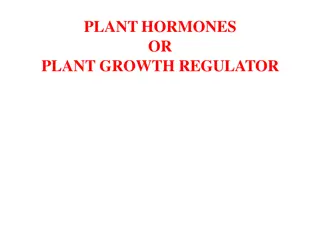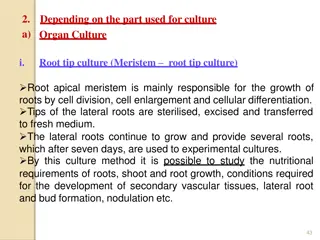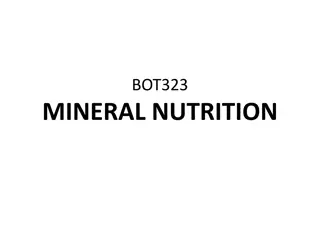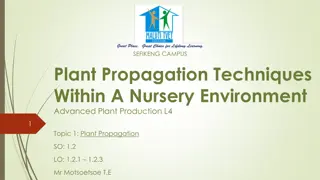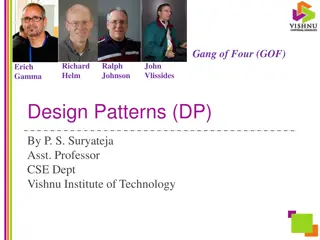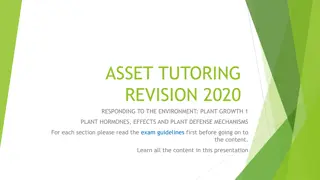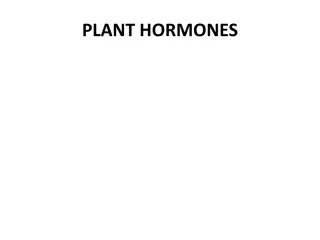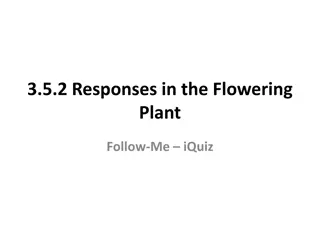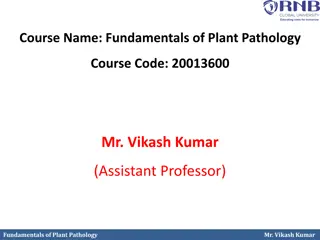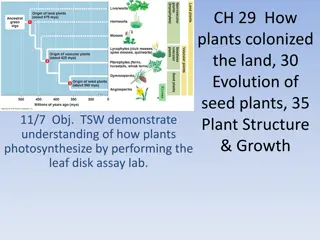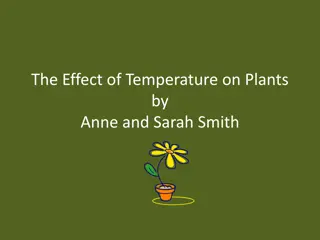Plant Meristems and Growth Patterns
Explore the fascinating world of plant meristems, the small clumps of cells responsible for elongation of roots and shoots, as well as the different types of primary meristems and their roles in plant growth. Learn about apical and lateral meristems, primary tissues, and the organization of the plant body including root systems, shoot systems, and various plant tissues.
Download Presentation

Please find below an Image/Link to download the presentation.
The content on the website is provided AS IS for your information and personal use only. It may not be sold, licensed, or shared on other websites without obtaining consent from the author.If you encounter any issues during the download, it is possible that the publisher has removed the file from their server.
You are allowed to download the files provided on this website for personal or commercial use, subject to the condition that they are used lawfully. All files are the property of their respective owners.
The content on the website is provided AS IS for your information and personal use only. It may not be sold, licensed, or shared on other websites without obtaining consent from the author.
E N D
Presentation Transcript
Plant Form Chapter 35 1
Meristems Meristematic tissues are clumps of small cells with dense cytoplasm and proportionately large nuclei. Elongation of roots and shoots takes place by repeated cell divisions and subsequent elongation by the apical meristem. In some species, lateral meristems produce an increase in girth. 2
Meristems Apical meristems located at tip of stems and roots Plant tissues that result from primary growth are called primary tissues. make up primary plant body root apical meristem protected by root cap 3
Apical Meristems Give rise to three types of primary meristems protoderm - forms epidermis procambium - forms primary vascular tissue ground meristem - differentiates into ground tissue intercalary meristems may arise in stem internodes 4
Lateral Meristems Most trees, shrubs, and some herbs have active lateral meristems. increases girth in nonwoody plants - secondary growth Woody stems cork cambium produces cork cells vascular cambium produces secondary vascular tissue 6
Organization of the Plant Body Vascular plant consists of: root system - anchors plant and penetrates soil to absorb water and ions shoot system stems framework for positioning leaves leaves - principle sites of photosynthesis vegetative shoot - internode, node leaf and axillary buds 8
Organization of the Plant Body Tissue types ground tissue - parenchyma cells dermal tissue - outer covering epidermis in primary growth plants cuticle bark in secondary growth plants vascular tissue - conduction xylem - water and dissolved materials phloem - carbohydrates 10
Primary and Secondary Growth Primary growth results from cell division at the apical meristem at the plant tip. Secondary growth results from cell division at the lateral meristem, increasing the shoot s girth. 11
Dermal Tissue Epidermal cells originating from the protoderm cover all parts of the primary plant body. guard cells - dumbbell-shaped cells flanking stomata trichomes - hairlike outgrowths regulate microclimate root hairs - tubular extensions of epidermal cells increase root s surface area 12
Ground Tissue Parenchyma store food and water Collenchyma provide support for plant organs Sclerenchyma supporting function secondary walls impregnated with lignin fibers and sclerids may be nonliving at maturity 13
Vascular Tissue Xylem principle water-conducting tissue combination of vessels and tracheids primary xylem derived from procambium secondary xylem formed by vascular cambium wood made of accumulated secondary xylem 15
Vascular Tissue Phloem principle food-conducting tissue in vascular plants, located toward the outer part of roots and stems carried out through sieve cells and sieve-tube members some sieve areas (pores) have larger pores called sieve plates each sieve-tube member associated with companion cell 16
Root Cells Differentiate Root structure root cap composed of inner columella cells and lateral root cap cells new root cap produced when existing cap is removed functions in gravity perception 18
Root Structure Zone of cell division cells divide every 12 to 36 hours toward the edges of the concave dome Apical meristem daughter cells divide into protoderm, procambium, and ground meristem tissues. Zone of elongation roots lengthen because cells produced by primary meristems grow longer than wide 19
Root Structure Zone of maturation cells differentiate into specific cell types root surface cells mature into epidermal hairs, each with root hair cortex produced by parenchyma cells inner boundary differentiates into endodermis surrounded by Casparian strips composed of suberin 20
Modified Roots Most plants produce either a taproot system (single large root with smaller branch roots) or a fibrous root system (many smaller roots of smaller diameter). 22
Woody Twig 23
External Stem Form Leaf blade - flattened portion petiole - stalk sessile - no petiole axil - space between petiole and stem axillary bud terminal bud stipules - appendages at base of leaf stipule scars 24
Stems 25
Modified Stems Special purpose modifications bulbs corms rhizomes runners and stolons tubers tendrils cladophylls 26
Leaves Leaf external structure microphylls - have one vein that does not leave a gap when it branches from the vascular cylinder of the stem megaphylls - have several veins that leave a gap when they branch from the vascular cylinder of the stem 28
Leaf External Structure Simple leaves - undivided blades Compound leaf - blade divided into leaflets pinnately compound - leaflets arranged in pairs along common axis palmately compound - leaflets radiate out from common point 29
Leaf External Structure Leaf arrangement alternate - one leaf per node opposite - two leaves per node whorl - circle of leaves at same level 30
Leaf Internal Structure Epidermis has waxy cuticle and may have tricomes lower epidermis contains stomata flanked by guard cells Mesophyll - tissue between upper and lower epidermis Dicots have rows of cholenchyma cells constituting the palisade mesophyll. spongy mesophyll between palisade mesophyll and lower epidermis monocot mesophyll not differentiated 31
Modified Leaves Modifications floral leaves (bracts) spines reproductive leaves window leaves shade leaves insectivorous leaves 33


